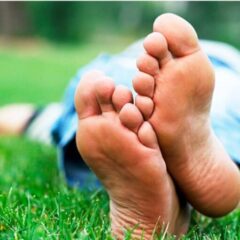Casa Bella is the name of my parent’s home and property in Port Macquarie, on the mid north coast of NSW, where I grew up. While they’re no longer in the same house that I grew up in from 1 year old, they are still on the same land just outside of the town, in a house only 300 metres from our old house.
Port Macquarie is one of the most historic towns in Australia, being the halfway stopover for ships travelling between Sydney and Brisbane from early settlement days to the 1950s. It was a penal settlement and boasts a rich convict history, with most of the original town buildings – garrison, churches, government and private houses, pubs, etc – built by convict labour. It was also a feared and treacherous place for convicts, with a huge amount of convict hangings, executions, floggings, torture and deaths occurring in the town during penal settlement, and even an armed rebellion by convicts – perhaps contributing to the town having a reputation also of ghost sightings and encounters. It was the first place in Australia that sugarcane and grapes were planted, both of which later were found to thrive in more tropical and cooler climates, respectively.
Port Macquarie also has a rich indigenous heritage, being a ‘meeting place’ for many local surrounding tribes who gathered and stayed in the area to hunt, fish, trade and communicate. These days, probably since the 1940s, it is tourist focused, boasting many beautiful beaches, lookouts, a lighthouse, national parks and easy access to scenic places in the region. Growing up here, it used to be famous for fresh seafood coming in on trawlers, as well as abundant fishing for locals and tourists.
These days, the tourist, fishing and related industries are dead in the water (no pun intended). Anyone staying in the town during the 80s and 90s, especially as young people, would remember the famous Peppermint Park, or Timber Town in Wauchope, a small town just west of Port Macquarie. These famous tourist activity parks and others all closed or are struggling since the 9-11 insurance crashes and ensuing GFC challenges, as well as increased focus on accommodation and commercial development in the town – another move which has failed and brought the town down, in my opinion.
Growing up here on our farm was the best time of my life. It was filled with rich natural and family experiences, which I would not swap for the world. From a baby, until about 12 years old, my father grew tomatoes and a few other veggies commercially. In those days, the local supermarkets would put in orders, which were delivered same or next day, direct from farm to shelf. At the same time, we ran an oyster-opening business, servicing all the once abundant restaurants in the town and region. The oysters were supplied from our own and extended family’s oyster farms.
For supplementary income and a hobby, we also had bee hives, a few cows and sheep, and a small flock of goats. In later years, still having the land, we operated a wholesale palm nursery in the early to mid 90s, which I managed for a few years. In the very early days, I remember having fresh milk every morning, a thick layer of cream on the top, brought inside in a bucket, freshly milked from our one dairy cow, Daisy (very original name for a cow, I know!)
A few years ago, before Steve Irwin died, I remember seeing a documentary about his early years, growing up on what was the beginning of Australia Zoo today. As I watched it, it reminded me of life on our farm, only minus the crocodiles. We had lots of old septic and corrugated iron tanks in our backyard, always full of wildlife – various lizards and snakes, turtles, frogs, crayfish and other animals. We hand-raised kangaroos, possums, lots of birds, wild pigs, as well as our countless farm animals – cows, horses, sheep, goats, pigs, many different breeds of chickens, ducks, geese, guinea fowl, peacocks, rabbits, guinea pigs and more. These days, the farm has an abundance of resident wild rabbits and almost daily visits from various types of deer (descendants from the large deer farms that once operated nearby in the 80s and 90s). Driving along roads to the west of the town, it’s not uncommon to see deer crossing the roads or on the roadside.
My middle brother and I were the ‘early conservationists’ in our family. We spent afternoons, weekends and holidays seeking out wildlife, climbing trees to spot bird nests and eggs, and exploring the farm and nearby forests and bushland. My oldest brother was, and still is, an avid hunter, spending most weekends travelling west to hunt feral animals like pigs, foxes, rabbits and cats. While it never sat well with me, even as a child, to kill things for sport, he only focused on feral animals, or animals which were seen as pests (debatable, I know), and as a result, we ate a lot of kangaroo, wild pig and rabbit meat growing up.
These days, I’ve come almost full circle, minus most of the meat-eating, and being back in this environment this week, I reminisce about all those experiences that shaped me and brought me to this related place in my life, living a green, sustainable lifestyle, and being a permaculturist and urban farming educator professionally. It’s great to have this lineage and life in my blood, to both enrich my own life now and to share with others. I’ll share more each day about the town, my farm and life here over the next week. Enjoy!
